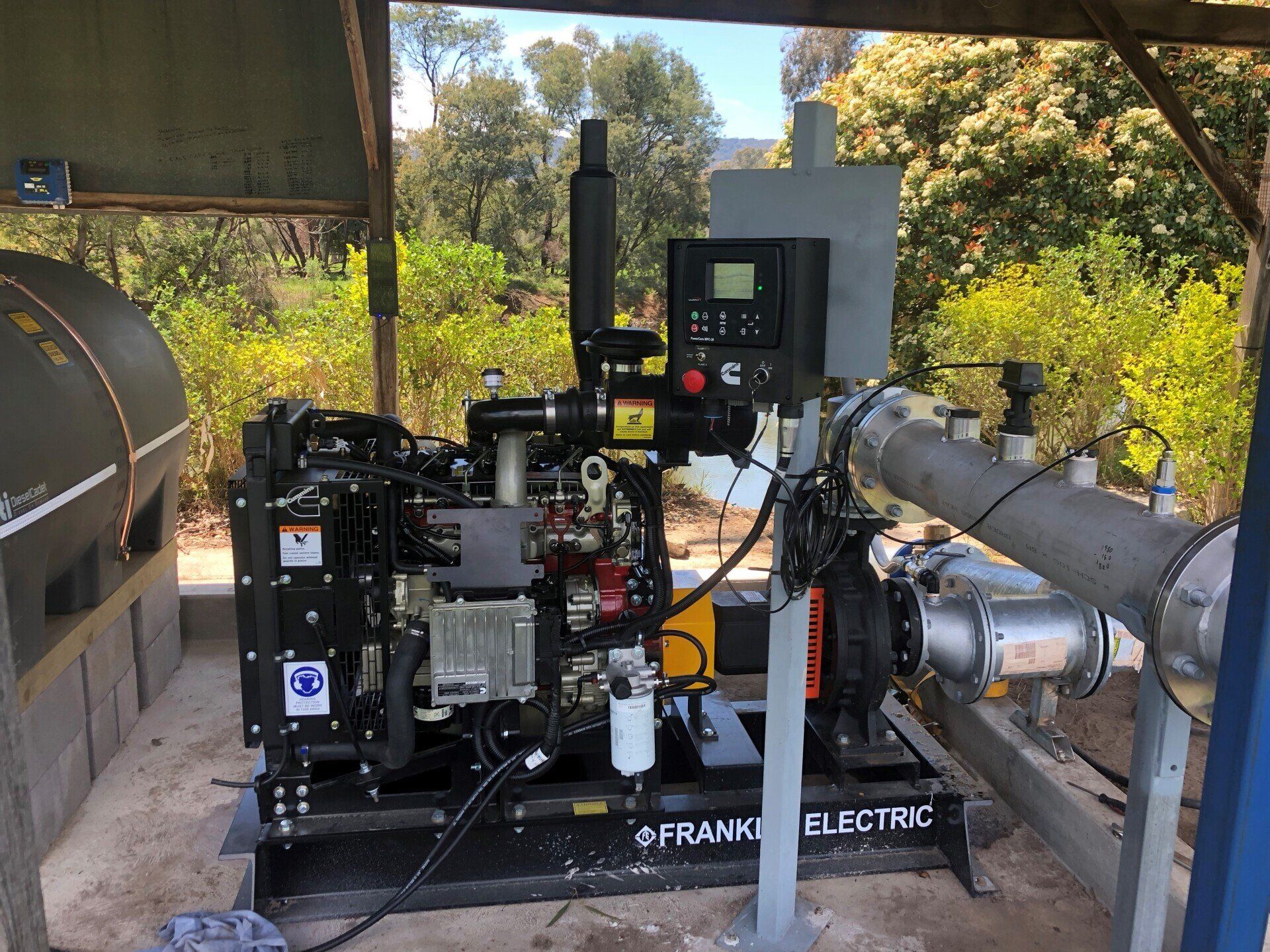1MG FlippingBooks
Moving Water Moving Forward
In 1962, Franklin Electric came from the USA to Australia to provide support and technical expertise to our water industry. Now, they are a global leader in all of their specialities, with their products being used across a broad scope of applications with the largest and most comprehensive ranges of pumping and associated products supplied by a single company globally.

After arriving on Australian shores in the early 1960s in Dandenong Victoria, Franklin Electric commenced importing and distributing 4”, 6”, 10” and 12” submersible products. Local manufacturing quickly followed with specialised imported parts to offer the Australian water industry Franklin’s world-leading submersible motors.
Today, Franklin Electrics range of products has expanded to a full range of surface mount pumps, ISO, split case, multi-stage, small and large centrifugal motor pumps as well as a huge range of below-ground pumps including submersible turbines, line shafts, boreholes and dewatering pumps to provide the industry with the highest quality submersible motor products available.
Relying on mother nature to irrigate crops, irrigate pastures and provide drinking water for animals can be risky, especially when unpredictable drought periods hit the hardest.
However the pumping systems manufactured by Franklin Electric provide the stability that naturally occurring weather patterns are unable, enabling farmers to increase their output, better predict crop yields and keep their animals strong, healthy and hydrated.
Malcolm Eyre, Managing Director of Franklin Electric Australia says that the main benefit that the Australian industry has come to rely on from Franklin is their quality, reliability and performance.
“Franklin demonstrates these every day to its customers through its five key factors for success: quality, availability, service, innovation and cost”.
This has resulted in Franklin Electric becoming not just Australia’s leading submersible motor but the world’s most installed submersible electric motor.
After decades of success partnering with pump manufacturers and developing a deep understanding of the market, Franklin Electric had some serious decisions to make when the industry started to consolidate globally in the late 1990s and early 2000s.
In 2004, Franklin Electric announced the purchase of JBD, formally the jacuzzi industrial range and that they were entering the pumping industry by launching Franklin Pumping Systems, now known as FPS.
Starting from a very low share, FPS is now the leading US market. As the pumping industry is global, similar issues applied in Australia.
“In late 2007 Franklin Electric Australia after 3 years of evaluating the market, entered the main water pump industry by launching and distributing their FPS range of submersible pumps and above-ground pumps, motors, drives and controls direct to their own Australian dealer network,” said Eyre.
Franklin Electric then purchased a 35% stake of Pioneer Pump Inc Situated in Canby Portland Oregon in 2005, growing their product line to include a large range of centrifugal pumps and automatic self-priming pumps as well as solids handling self-priming pumps. The remaining 65% of Pioneer Pump Inc was purchased by Franklin Electric in 2011.
Today Franklin Electric Australia and Pioneer Pump Holdings Australia are 1 company “Franklin Electric Australia New Zealand Pty Ltd, with 2 facilities operating, the Warehouse and Assembly facility in Dandenong South, Victoria and the Fabrication Assembly and test facility in Sunshine West Victoria, which includes a logistic warehouse in Ravenhall Victoria.
According to Eyre, alongside the consolidation of the businesses comes the staff and the years of pump experience that the company now has.
“We now have hundreds of years worth of experience to assist every person who needs help with a pump or application,” said Eyre.
“Whether you need a submersible pump for a clean well water system or an industrial water pump for a larger job, Franklin has a solution to fit your needs, because moving water is our business”.
Whether the need is lawn or crop irrigation, water transfer, drinking water for people or livestock, or just having water where it currently isn’t, ask for Franklin Electric.
















